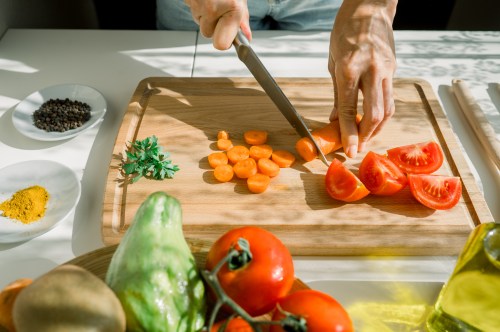Our editors independently select these products. Making a purchase through our links may earn Well+Good a commission
Being cooped up at home more than ever before this year has resulted in a lot of time in the kitchen. I mean, at this point, pretty much everyone has their own sourdough starter. Aside from becoming pro bakers, 2020 has also amped up our at-home barista skills. And if you’re still working on mastering the perfect frothy alt-milk latte, you may just need a little help from science.
Experts in This Article
food scientist and product development manager at Panaceutics
While cow’s milk has no problem frothing like a champ, the reason your dairy-free version isn’t nearly as good might just come down to not choosing the best milk alternative for lattes. “The art of making lattes is to create a stable microfoam. Cow’s milk (especially whole) excels at this because of the proteins naturally present in the milk. The fat and naturally-occurring sugars will add body and luxurious sweetness,” says Makenzie Bryson Jackson, MS, food scientist and product development manager at Panaceutics. “Most plant milks are lower in protein and will not hold the foam structure as well.”
Even though plant milks don’t have quite the same qualities as dairy, Bryson Jackson says there are certain types that are better for making lattes than others. The best one being oat milk. “Many barista friends love using oat milk. It works well because it also has enough protein and fibers to create a beautiful stable foam,” she says. “Oatly Oatmilk holds strongly as a great vegan latte option and creates a great foam structure.”
Shop now:Smeg Milk Frother and Oatly Oatmilk Barista Edition
Aside from oat milk, Bryson Jackson says to also look for plant-based milk options that are higher in carbs and protein for a great froth. “I’ve seen good results from hemp, pea, and soy, all because they have a higher protein content,” she says. Buying a barista-style option also makes a big difference (like this one from Pacific Foods, for instance) as they’re more heat-stable and better suited for lattes. And if you’re really serious about getting the best froth, the equipment matters, too.
Handheld electric milk frothing whisks ($24) are an affordable way to add foam to your lattes, but you can also take things up a notch with a milk frother machine. Breville ($130) and Smeg ($200) both have options that will make you feel like a barista. I have the latter, and it’s worth every cent: All you need to do is select your desired level of froth, add your alt-milk, press a button, and bam—you have the perfect, creamy foam to add to your lattes in seconds.
Considering most lattes cost upward of $5 at nearly every coffee shop, choosing the right milk and the right tools to make your own definitely ends up saving you money in the long-run. Plus, what’s more fun than playing coffee shop in your own kitchen? With these tips, you’ll be a pro in no time.
For more healthy recipes and cooking ideas from our community, join Well+Good’s Cook With Us Facebook group.
Sign Up for Our Daily Newsletter
Get all the latest in wellness, trends, food, fitness, beauty, and more delivered right to your inbox.
Got it, you've been added to our email list.










